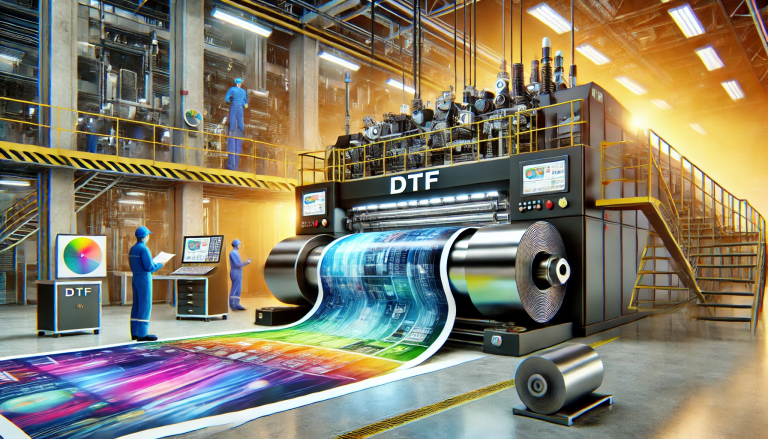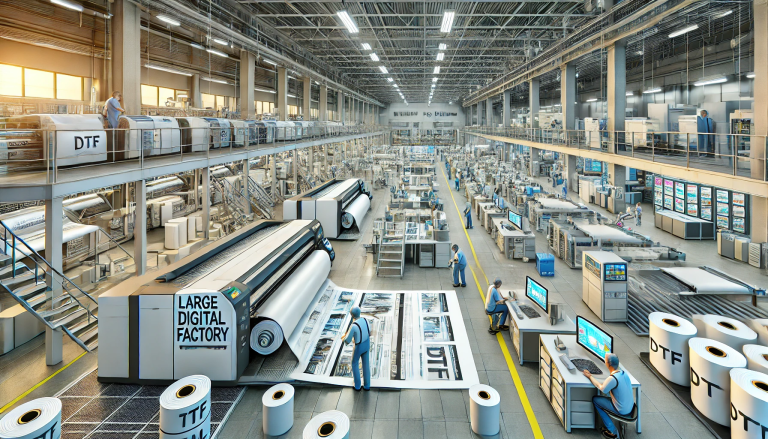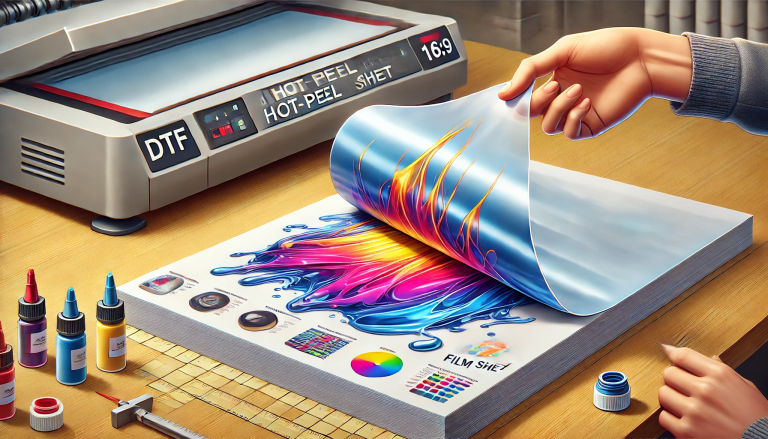“Print on the Right Side of DTF Film A4 for Professional Results!” -MAXDTF- PET Film para DTF Supplier, PET Film roll for DTF Manufacturer, Made in china
Introduction
Which side of DTF Film A4 do you print on? This is an important question to consider when printing on DTF Film A4. DTF Film A4 is a special type of film that is used for a variety of printing applications, including printing on fabrics, paper, and other materials. It is important to know which side of the film to print on to get the best results. In this article, we will discuss the different sides of DTF Film A4 and how to determine which side to print on. We will also provide some tips for successful printing on DTF Film A4.
Troubleshooting Common Issues When Printing on DTF Film A4
Printing on DTF film A4 can be a tricky process, and it is not uncommon to encounter issues when attempting to do so. Fortunately, there are a few common issues that can be easily resolved.
The first issue that may arise is that the image is not printing correctly. This can be caused by several factors, such as incorrect printer settings, incorrect media type, or a low-quality image. To resolve this issue, ensure that the printer settings are correct for the media type and that the image is of a high enough resolution.
Another common issue is that the image is not sticking to the film. This can be caused by several factors, such as incorrect printer settings, incorrect media type, or a low-quality image. To resolve this issue, ensure that the printer settings are correct for the media type and that the image is of a high enough resolution. Additionally, it is important to ensure that the film is clean and free of dust and debris before printing.
Finally, it is possible that the image is not printing in the correct colors. This can be caused by incorrect printer settings, incorrect media type, or a low-quality image. To resolve this issue, ensure that the printer settings are correct for the media type and that the image is of a high enough resolution. Additionally, it is important to ensure that the printer is calibrated correctly.
By following these steps, it is possible to troubleshoot and resolve common issues when printing on DTF film A4. With the correct settings and a high-quality image, it is possible to achieve excellent results.
Comparing Different Types of DTF Film A4 and Their Printing Properties
When it comes to selecting the right DTF film for a printing project, it is important to consider the various types of film available and their printing properties. DTF film A4 is a popular choice for many printing projects due to its versatility and affordability. This article will compare the different types of DTF film A4 and their printing properties to help you make an informed decision.
The first type of DTF film A4 is a polyester-based film. This type of film is known for its excellent durability and resistance to fading, making it a great choice for outdoor applications. It is also highly resistant to water and other liquids, making it ideal for use in wet environments. Additionally, the polyester-based film is easy to print on and produces vibrant colors.
The second type of DTF film A4 is a vinyl-based film. This type of film is known for its flexibility and ease of use. It is also highly resistant to scratches and other damage, making it a great choice for projects that require frequent handling. Additionally, the vinyl-based film is easy to print on and produces vivid colors.
The third type of DTF film A4 is a polypropylene-based film. This type of film is known for its excellent durability and resistance to fading, making it a great choice for outdoor applications. It is also highly resistant to water and other liquids, making it ideal for use in wet environments. Additionally, the polypropylene-based film is easy to print on and produces vibrant colors.
In conclusion, each type of DTF film A4 has its unique printing properties. When selecting the right film for your project, it is important to consider the type of film, its durability, and its printing properties. By doing so, you can ensure that you select the best film for your project and achieve the desired results.
Tips for Achieving the Best Results When Printing on DTF Film A4
1. Choose the Right Printer: When printing on DTF film A4, it is important to choose a printer that is specifically designed for this type of media. Look for a printer that is capable of handling the thickness of the film and has a high-resolution output.
- Use the Correct Ink: Make sure to use the correct ink for your printer when printing on DTF film A4. This type of film requires a special type of ink that is designed to adhere to the film and provide a high-quality image.
- Adjust the Printer Settings: Before printing, make sure to adjust the printer settings to ensure the best results. Adjust the resolution, color settings, and other settings to ensure the best quality image.
- Clean the Printer: Before printing, make sure to clean the printer to ensure that no dust or debris could affect the quality of the image.
- Use a High-Quality Film: Make sure to use a high-quality DTF film A4 to ensure the best results. Low-quality films can cause the image to be distorted or pixelated.
- Use a High-Quality Paper: When printing on DTF film A4, it is important to use a high-quality paper that is designed for this type of media. This will help to ensure that the image is printed correctly and looks its best.
- Use a High-Quality Ink: Make sure to use high-quality ink when printing on DTF film A4. This will help to ensure that the image is printed correctly and looks its best.
- Allow the Image to Dry: After printing, make sure to allow the image to dry completely before handling it. This will help to ensure that the image does not smudge or smear. Exploring the Benefits of Printing on DTF Film A4Printing on DTF film A4 offers a range of benefits for businesses and individuals alike. DTF film A4 is a type of polyester film that is designed for use in digital printing. It is a versatile material that can be used for a variety of applications, including signage, banners, and other promotional materials.
One of the main benefits of printing on DTF film A4 is its durability. The film is highly resistant to water, UV rays, and other environmental factors, making it an ideal choice for outdoor applications. It is also highly resistant to tearing and scratching, making it a great choice for applications that require a long-lasting finish. Additionally, the film is easy to clean and maintain, making it a great choice for businesses that need to keep their promotional materials looking their best.
Another benefit of printing on DTF film A4 is its versatility. The film can be used for a variety of applications, including banners, signs, and other promotional materials. Additionally, the film can be printed in a variety of colors, allowing businesses to create unique and eye-catching designs. The film is also compatible with a variety of printing methods, including inkjet, laser, and dye-sublimation, making it a great choice for businesses that need to produce high-quality prints quickly and efficiently.
Finally, printing on DTF film A4 is cost-effective. The film is relatively inexpensive compared to other materials, making it a great choice for businesses that need to produce promotional materials on a budget. Additionally, the film is easy to store and transport, making it a great choice for businesses that need to produce materials quickly and efficiently.
Overall, printing on DTF film A4 offers a range of benefits for businesses and individuals alike. The film is highly durable, versatile, and cost-effective, making it an ideal choice for a variety of applications. Additionally, the film is easy to store and transport, making it a great choice for businesses that need to produce promotional materials quickly and efficiently.
How to Determine Which Side of DTF Film A4 to Print On
When printing on DTF film A4, it is important to determine which side of the film should be printed on. The side of the film that should be printed on is the side that is labeled “Print Side”. This side of the film is usually slightly shinier than the other side. Additionally, the “Print Side” is usually slightly rougher to the touch than the other side. It is important to note that the “Print Side” should always face the printer.
When printing on DTF film A4, it is also important to ensure that the film is loaded correctly into the printer. The film should be loaded with the “Print Side” facing up. Additionally, the film should be loaded so that the leading edge of the film is closest to the printer. This will ensure that the film is printed correctly.
It is important to note that if the film is not loaded correctly, the printer may not be able to detect the “Print Side” and the print quality may be affected. Additionally, if the film is not loaded correctly, the printer may not be able to detect the leading edge of the film and the print may be misaligned.
In conclusion, when printing on DTF film A4, it is important to determine which side of the film should be printed on. The side of the film that should be printed on is the side that is labeled “Print Side”. Additionally, it is important to ensure that the film is loaded correctly into the printer with the “Print Side” facing up and the leading edge of the film closest to the printer.
Conclusion
In conclusion, when printing on DTF Film A4, it is important to remember to print on the glossy side of the film. This will ensure that the print is of the highest quality and will last for a long time. It is also important to remember to use the correct printer settings to ensure that the print is of the highest quality.





